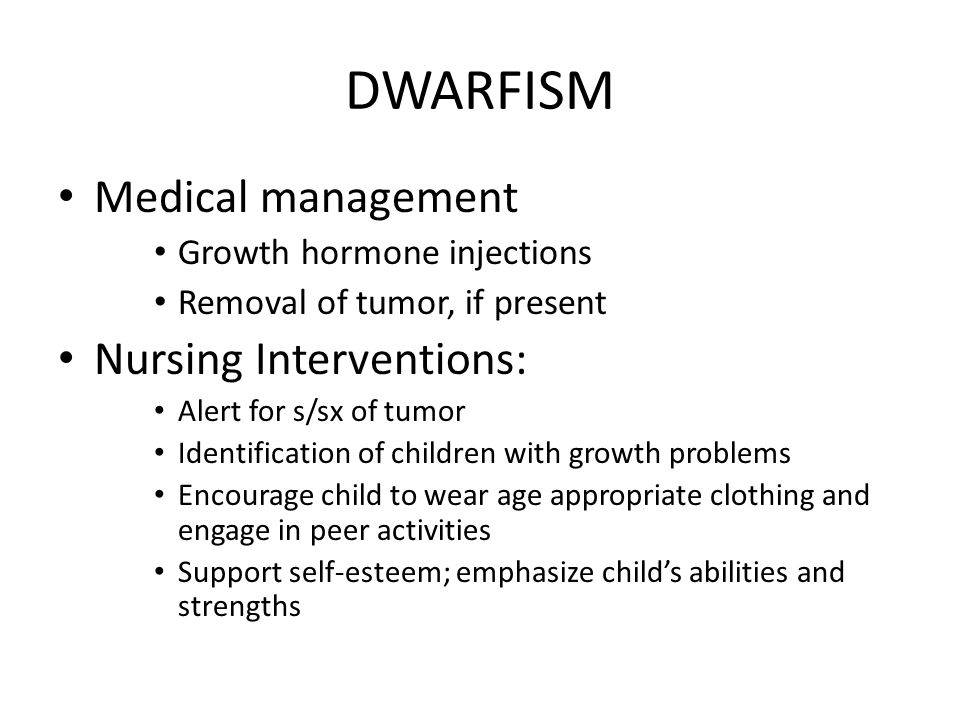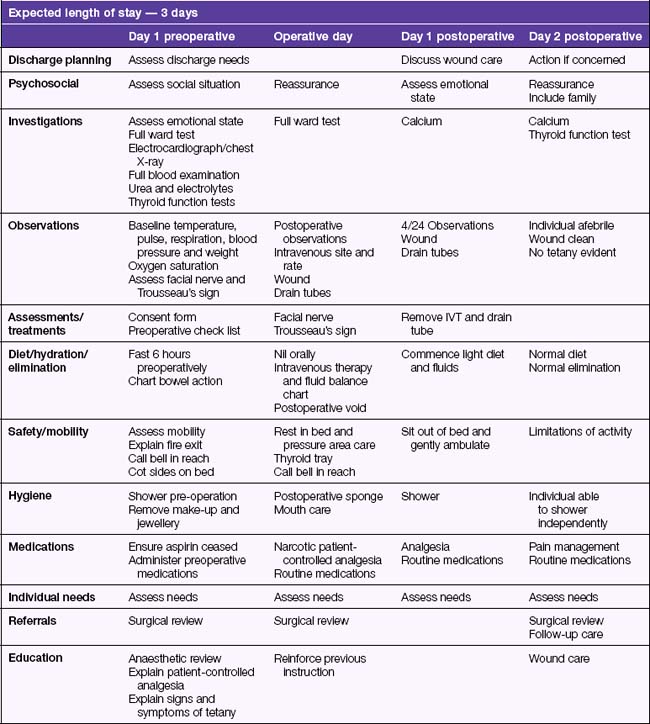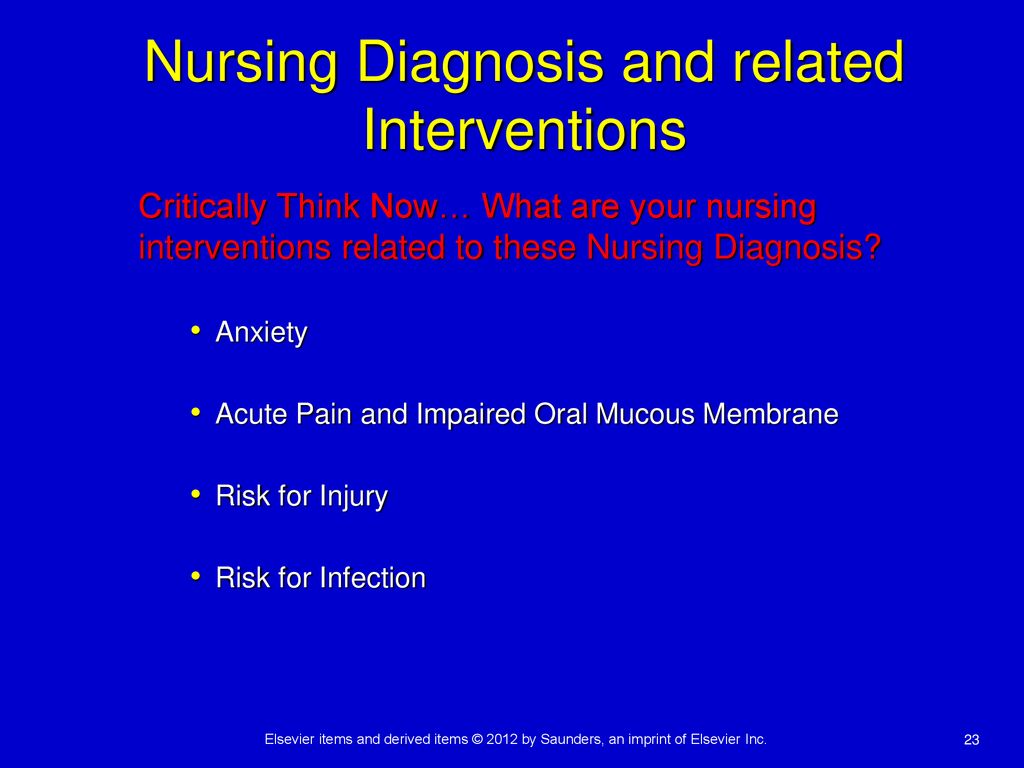Are you a nurse seeking valuable insights and information on how to effectively care for patients with dwarfism? Look no further! In this article, we will explore the key nursing considerations and nursing management techniques essential for providing optimal care to individuals with dwarfism. Through understanding the unique needs and challenges faced by these patients, you will acquire valuable knowledge to enhance your nursing practice and deliver compassionate care that truly makes a difference. So, let’s embark on this enlightening journey together and ensure the best possible care for individuals with dwarfism.

Nutritional Considerations
Monitoring and managing growth
When caring for individuals with dwarfism, it is important to closely monitor and manage their growth. Regular measurements of height and weight are vital to track growth progress and ensure that it aligns with the expected growth patterns for a person with dwarfism. By closely monitoring growth, healthcare providers can make appropriate adjustments to the individual’s nutritional intake and evaluate the effectiveness of any interventions.
Ensuring adequate intake of nutrients
Individuals with dwarfism may have specific nutritional needs to support their growth and development. It is essential to ensure they are receiving an adequate intake of essential nutrients, including proteins, vitamins, and minerals. Collaborating with dieticians can help create specialized dietary plans to meet these needs. Introducing a well-balanced diet that focuses on nutrient-dense foods can help promote optimal growth and overall health.
Educating parents on special dietary needs
Proper nutrition is crucial in managing dwarfism, and parents play a vital role in ensuring their child’s dietary needs are met. It is essential to educate parents about the specific dietary requirements for individuals with dwarfism, as well as any restrictions or modifications that may be necessary. Empowering parents with nutritional knowledge allows them to make informed decisions and promote their child’s well-being.
Monitoring weight and BMI
Regular monitoring of weight and body mass index (BMI) is important when caring for individuals with dwarfism. This monitoring can provide valuable information about their overall health and help detect any potential concerns, such as excessive weight gain, which can put additional strain on their musculoskeletal system. By closely monitoring weight and BMI, healthcare professionals can intervene early if necessary and provide appropriate guidance on managing weight and overall health.
Addressing feeding difficulties
Feeding difficulties can be a common issue in individuals with dwarfism. These challenges may arise due to physical limitations, such as skeletal abnormalities or oral motor difficulties. Nurses can play a crucial role in addressing and managing these difficulties by working with occupational therapists and speech therapists to develop strategies that promote efficient feeding and ensure adequate intake of nutrients. Providing support to both the individual and their family can go a long way in overcoming feeding challenges and promoting a healthy nutritional status.
Physical Assessment
Assessing height, weight, and body proportions
Physical assessments of individuals with dwarfism include evaluating their height, weight, and body proportions. Comparing these measurements to age-appropriate growth charts for individuals with dwarfism is essential to determine if they are following their expected growth trajectory. Additionally, observing body proportions can help identify any abnormal or disproportionate growth patterns that may require further evaluation.
Identifying physical manifestations of dwarfism
Dwarfism can present with various physical manifestations that differ depending on the underlying cause. These manifestations may include shorter limbs, abnormal spinal curvature, and distinct facial features. Nurses need to assess for these physical characteristics to aid in the diagnosis and provide appropriate care and management.
Assessing joint mobility and musculoskeletal health
Joint mobility and musculoskeletal health are crucial aspects to evaluate in individuals with dwarfism. Limited joint mobility and skeletal abnormalities can impact an individual’s overall functionality and quality of life. Assessing joint range of motion, muscle strength, and any signs of pain or discomfort can help identify areas that may require intervention or additional support.
Evaluating for associated health conditions
Individuals with dwarfism may have an increased risk of developing certain associated health conditions, such as spinal abnormalities, respiratory issues, and orthopedic complications. Nurses should be vigilant in monitoring for signs and symptoms of these conditions and collaborate with other healthcare professionals to ensure comprehensive care.
Monitoring rate of growth and developmental milestones
Monitoring the rate of growth and achieving developmental milestones is crucial in the care of individuals with dwarfism. This includes assessing milestones such as sitting, crawling, walking, and speech development. Close monitoring can help identify any delays or concerns early on, leading to appropriate interventions and support to maximize the individual’s potential.

Psychosocial Support
Addressing body image concerns
Body image concerns can be a significant challenge for individuals with dwarfism, especially during adolescence when self-esteem and identity formation are critical. Nurses can play a vital role in addressing these concerns by providing counseling and support, emphasizing the unique qualities and strengths of the individual, and promoting a positive self-image.
Providing emotional support to child and family
Dwarfism can pose unique challenges for both the individual and their family. It is essential for nurses to provide emotional support and create a safe and compassionate environment where concerns and fears can be openly discussed. By offering a listening ear, validating emotions, and providing education and resources, nurses can help alleviate stress and foster a sense of security for the child and their family.
Promoting self-esteem and positive self-image
Building self-esteem and nurturing a positive self-image are essential aspects of caring for individuals with dwarfism. Nurses can help by celebrating the individual’s achievements, encouraging their involvement in age-appropriate activities, and helping them develop coping strategies to navigate any challenges they may face.
Encouraging participation in age-appropriate activities
Encouraging individuals with dwarfism to participate in age-appropriate activities is crucial for their overall well-being and social development. Nurses can support and advocate for their inclusion in recreational activities, sports, and social gatherings by collaborating with educators, coaches, and community organizations to create an inclusive environment.
Supporting peer interactions and socialization
Socialization is an important aspect of any child’s development, and individuals with dwarfism may encounter unique social challenges. Nurses can provide guidance and support to help individuals with dwarfism develop social skills, promote positive peer interactions, and foster a sense of belonging within their community. This may include facilitating support groups, connecting families with similar experiences, and providing resources for socialization opportunities.
Communication and Education
Explaining the diagnosis and implications of dwarfism
Effectively communicating the diagnosis of dwarfism and its implications to both the individual and their family is crucial. Nurses can play a key role in providing clear and accurate information, answering questions, and addressing concerns, while ensuring that the information is presented in a compassionate and understandable manner.
Educating parents on treatment options and interventions
Parents need to be well-informed about the available treatment options and interventions for dwarfism. Nurses should collaborate with healthcare providers to educate parents about various treatments, such as growth hormone therapy, orthopedic interventions, and physical therapy. Empowering parents with knowledge allows them to make informed decisions about their child’s care.
Providing information on assistive devices and adaptations
Assistive devices and adaptations can significantly enhance the functionality and independence of individuals with dwarfism. Nurses should provide information about the availability and benefits of assistive devices, such as customized furniture, mobility aids, and adaptive equipment. They can also collaborate with occupational therapists to ensure the individual’s environment is adapted to meet their unique needs.
Teaching parents how to advocate for their child
Parents play a critical role in advocating for their child’s needs within the healthcare system and other areas of life. Nurses can empower parents by providing education on effective advocacy strategies, encouraging open communication with healthcare providers, and helping them navigate resources and support networks.
Creating an individualized care plan
Each individual with dwarfism will have unique needs and considerations, necessitating individualized care plans. Nurses should collaborate with the individual, their family, and other healthcare professionals to develop comprehensive care plans that address specific goals, interventions, and follow-up assessments. By tailoring the care plan to the individual’s needs, nurses can provide holistic and personalized care.

Mobility and Physical Assistance
Assessing mobility limitations and challenges
Individuals with dwarfism may experience mobility limitations and face unique challenges related to their height and skeletal structure. Nurses should assess their mobility limitations, including difficulties with walking, climbing stairs, or accessing certain environments. This assessment helps identify areas that require physical assistance, modifications, or adaptive equipment.
Collaborating with physical and occupational therapists
Physical and occupational therapists are essential members of the healthcare team when caring for individuals with dwarfism. Nurses should collaborate closely with these professionals to develop and implement mobility plans, exercise programs, and strategies to improve functionality and independence. This collaboration ensures a coordinated and holistic approach to mobility care.
Providing resources for mobility aids and adaptations
Ensuring individuals with dwarfism have access to appropriate mobility aids and adaptations is crucial for their independence and overall well-being. Nurses can provide resources and guidance on obtaining suitable mobility aids, such as walkers, crutches, or wheelchairs, while also assisting with the necessary measurements and fittings. Additionally, they can recommend modifications to the individual’s environment to enhance accessibility and safety.
Promoting independence and maximizing functioning
Promoting independence and maximizing functioning are key goals in caring for individuals with dwarfism. Nurses should encourage the development of skills that facilitate independence, such as self-care techniques and assistive technology utilization. By focusing on strengths and abilities, nurses can help individuals achieve their highest level of functioning and enhance their quality of life.
Addressing pain management and musculoskeletal issues
Individuals with dwarfism may experience musculoskeletal pain and discomfort, which can significantly impact their quality of life. Nurses should assess and address any pain symptoms, collaborate with healthcare professionals to manage pain medications and therapies, and provide appropriate education and support to both the individual and their family. By addressing pain management, nurses can help improve overall comfort and well-being.
Respiratory Monitoring and Care
Monitoring respiratory function and oxygen saturation
Respiratory complications, such as decreased lung capacity or sleep apnea, are potential concerns for individuals with dwarfism. Nurses should regularly monitor respiratory function, including respiratory rate, oxygen saturation levels, and signs of respiratory distress. This monitoring is vital in detecting any respiratory changes and provides the opportunity for timely interventions and appropriate respiratory therapies.
Educating parents on signs of respiratory distress
Parents should be educated about the signs and symptoms of respiratory distress in individuals with dwarfism. Nurses can provide information on common respiratory symptoms, such as shortness of breath, wheezing, or increased work of breathing. By empowering parents with this knowledge, they can monitor their child’s respiratory status and seek medical attention if any concerning signs arise.
Administering respiratory therapies as prescribed
Respiratory therapies may be necessary for individuals with dwarfism to maintain optimal lung function. Nurses should be familiar with various respiratory therapies, such as chest physiotherapy or nebulizer treatments, and properly administer these therapies as prescribed. Monitoring the individual’s response and providing education on correct technique and equipment maintenance are essential aspects of respiratory care.
Collaborating with respiratory therapists
Collaboration with respiratory therapists is essential when caring for individuals with respiratory complications associated with dwarfism. Nurses should work closely with respiratory therapists to optimize respiratory care, ensure proper management of respiratory therapies, and address any concerns or changes in the individual’s respiratory status. By collaborating, the healthcare team can provide comprehensive care and support for the individual’s respiratory needs.
Monitoring for sleep apnea and other respiratory complications
Individuals with dwarfism are at increased risk for sleep apnea and other respiratory complications. Nurses should closely monitor for signs and symptoms of sleep apnea, such as loud snoring, pauses in breathing during sleep, or excessive daytime sleepiness. Prompt identification of respiratory complications allows for timely intervention, such as referral to a sleep specialist, and the implementation of appropriate management strategies.

Orthopedic Considerations
Assessing for spine abnormalities and scoliosis
Spine abnormalities, including scoliosis, are common concerns for individuals with dwarfism. Nurses should assess spinal alignment, observing for any signs of curvature or deformity. Early identification and intervention are crucial in managing spine abnormalities, as progressive scoliosis can lead to respiratory and musculoskeletal complications. Referring for orthopedic evaluation is necessary to determine the appropriate course of treatment.
Referring for orthopedic evaluations and interventions
Orthopedic evaluations play a pivotal role in the management of individuals with dwarfism. Nurses should collaborate with orthopedic specialists to obtain comprehensive assessments and recommendations for interventions, such as bracing, physical therapy, or surgical correction. Close monitoring and follow-up are necessary to ensure the effectiveness of interventions and to address any potential complications.
Monitoring for joint pain and degenerative joint disease
Individuals with dwarfism may experience joint pain and an increased risk of developing degenerative joint disease (osteoarthritis) due to the abnormal stress placed on their joints. Nurses should assess for joint pain and monitor joint function regularly. Providing appropriate pain management strategies, collaborating with orthopedic specialists, and promoting joint protection and mobility exercises can help mitigate joint pain and preserve joint health.
Providing education on proper body mechanics
Educating individuals with dwarfism and their families on proper body mechanics is essential for preventing musculoskeletal strain and minimizing the risk of injuries. Nurses should provide guidance on safe lifting techniques, positioning, and ergonomics. This education can empower individuals to take an active role in preserving their musculoskeletal health and preventing further complications.
Collaborating with orthopedic specialists
Collaboration with orthopedic specialists is crucial in managing orthopedic considerations in individuals with dwarfism. Nurses should work closely with these specialists to ensure comprehensive assessments, develop appropriate care plans, and monitor the effectiveness of interventions. Regular communication and collaboration help optimize musculoskeletal care and address any emerging concerns.
Hydrocephalus and Neurological Care
Monitoring for signs of hydrocephalus and increased intracranial pressure
Hydrocephalus, characterized by an excessive accumulation of fluid in the brain, is a potential complication of some forms of dwarfism. Nurses should monitor for signs and symptoms of hydrocephalus, such as headaches, nausea, vomiting, and changes in consciousness. Detecting these signs early is vital in coordinating timely intervention, such as a neurosurgical consultation or shunt placement, to manage increased intracranial pressure.
Coordinating with neurologists and neurosurgeons
Coordinating with neurologists and neurosurgeons is essential in the care of individuals with dwarfism who may require specialized neurological interventions. Nurses should collaborate closely with these specialists to ensure comprehensive evaluations, manage any neurological complications, and provide educational support to the individual and their family.
Educating parents on signs of neurological complications
Parents should be educated on the signs and symptoms of potential neurological complications associated with dwarfism. Nurses can provide information on signs such as seizures, developmental delays, or cognitive impairments. By raising awareness, parents can promptly report any concerns and seek appropriate medical attention to mitigate long-term effects.
Monitoring for developmental delays and cognitive impairments
Monitoring for developmental delays and cognitive impairments is crucial in individuals with dwarfism. Nurses should assess and monitor developmental milestones, including speech, motor skills, and cognitive abilities. Early identification of delays or impairments allows for early interventions, such as developmental therapies, educational support, or counseling, to optimize the individual’s overall development and well-being.
Managing medications and therapies as prescribed
In the care of individuals with dwarfism, nurses may be responsible for managing medications and therapies prescribed by neurologists or neurosurgeons. This includes administering medications as scheduled, monitoring for any adverse effects, and educating the individual and their family on medication administration, potential side effects, and the importance of adherence to the prescribed regimen.

Genetic Counseling and Family Support
Referring families to genetic counselors
Genetic counseling is crucial for families affected by dwarfism, as it provides information about the underlying genetic causes, inheritance patterns, and the risks associated with future pregnancies. Nurses should refer families to genetic counselors who specialize in dwarfism to provide comprehensive education, counseling, and genetic testing when necessary. Genetic counseling can aid in making informed decisions regarding family planning and understanding the hereditary nature of dwarfism.
Providing emotional support and coping strategies
A diagnosis of dwarfism can have significant emotional implications for individuals and their families. Nurses should provide emotional support by actively listening, providing a safe space for expression, and offering coping strategies. By acknowledging the emotional challenges and providing resources for counseling or support groups, nurses can help families navigate the emotional journey associated with dwarfism.
Assisting with family planning decisions
Family planning decisions can be complex for families affected by dwarfism. Nurses should provide information on reproductive options, such as pre-implantation genetic diagnosis or adoption, and connect families with appropriate resources, including reproductive specialists or adoption agencies. Assisting with family planning decisions allows families to make choices that align with their values and individual circumstances.
Connecting families with support groups and resources
Support groups and resources specific to dwarfism can provide invaluable support, guidance, and a sense of community for individuals and their families. Nurses should connect families with these support networks, both locally and online, where they can share experiences, gain knowledge, and find emotional support. By fostering connections, nurses promote resilience and well-being within the dwarfism community.
Educating family members on the hereditary nature of dwarfism
Educating family members on the hereditary nature of dwarfism is vital to increase their understanding and promote a supportive environment. Nurses should provide educational materials and actively engage in discussions to dispel any misconceptions or stigmas associated with dwarfism. Promoting accurate information and fostering acceptance within the family can help reduce potential strain and create a supportive network for the individual.
Transition to Adult Care
Preparing adolescents for the transition to adult healthcare
Transitioning from pediatric to adult healthcare can be a challenging and overwhelming process for individuals with dwarfism. Nurses should help prepare adolescents for this transition by discussing the differences in healthcare systems, emphasizing the importance of continued care, and addressing any concerns or fears. This preparation enables individuals to become active participants in their healthcare and advocate for their needs.
Addressing unique challenges faced by young adults with dwarfism
Young adults with dwarfism may face unique challenges related to healthcare access, employment, independent living, and socialization. Nurses should be aware of these challenges and proactively address them through open communication, education, and referrals to appropriate resources. By acknowledging and assisting with these challenges, nurses can support young adults with dwarfism in navigating the complexities of adulthood.
Assisting with the coordination of care with adult specialists
Coordinating care with adult specialists is crucial during the transition to adult healthcare. Nurses should collaborate with the individual, their family, and healthcare providers to ensure a smooth transition, including the transfer of medical records, scheduling appointments with adult specialists, and providing necessary information to the new healthcare team. Clear communication and collaboration help maintain continuity of care and optimal health outcomes.
Providing guidance on insurance and healthcare access
Health insurance and healthcare access can be complex for individuals with dwarfism, especially during the transition to adulthood. Nurses should provide guidance on navigating insurance coverage, identifying available resources, and advocating for necessary healthcare services. By ensuring individuals understand their insurance options and know how to access healthcare, nurses can help eliminate barriers to care.
Supporting the development of self-advocacy skills
As individuals with dwarfism transition into adulthood, developing self-advocacy skills becomes increasingly important. Nurses should support the development of these skills by empowering individuals to voice their concerns, ask questions, and actively participate in their healthcare decision-making. Self-advocacy skills enable individuals to have greater control over their healthcare and promote their overall well-being.